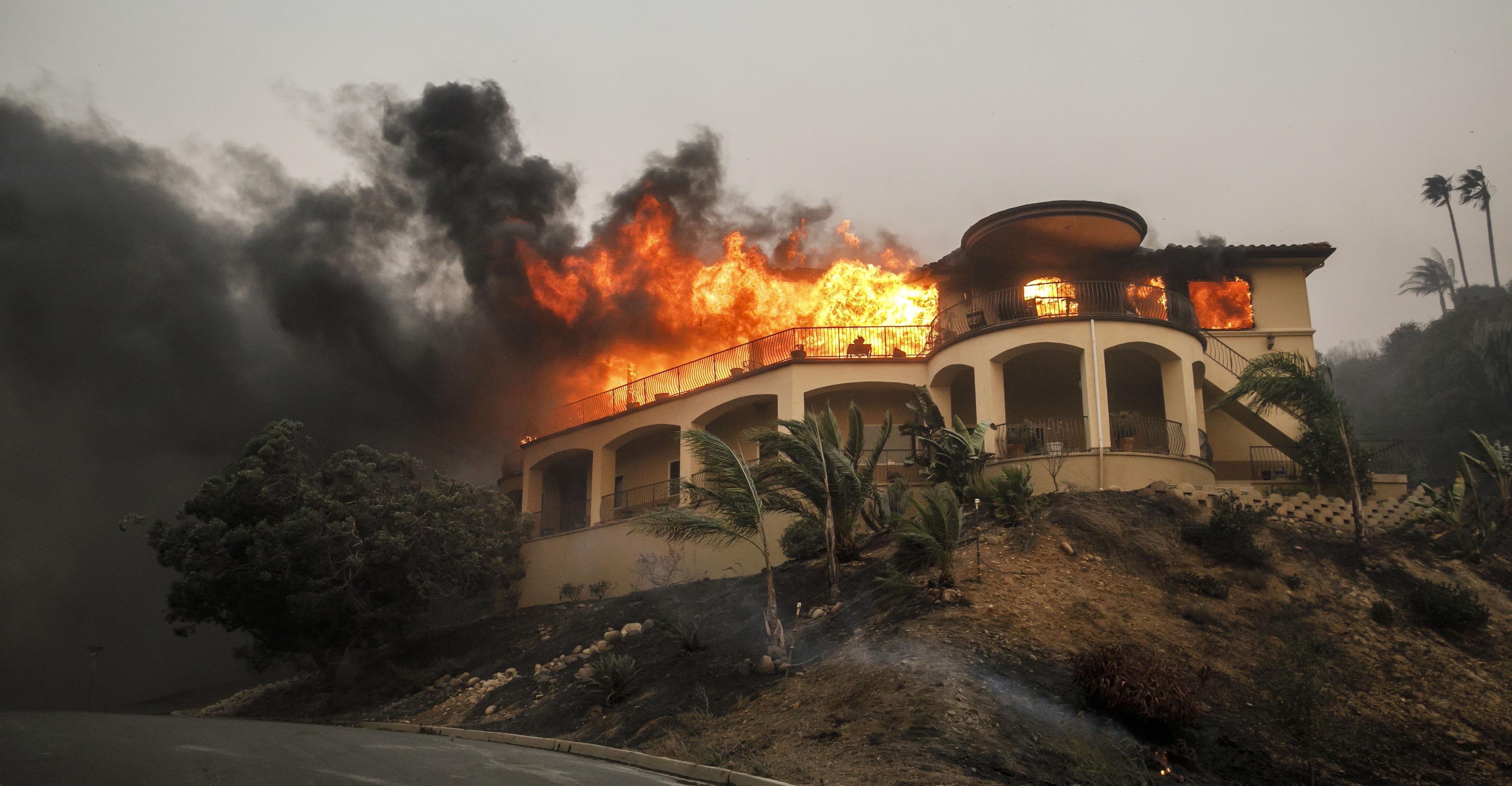Despite record power demand, the grid largely avoided blackouts. Don’t take this for granted.


With little acknowledgment and no applause, the power grid across the continental United States this summer quietly pulled off what may have been its most impressive feat ever.
On July 27, the US grid served nearly 15 million megawatt-hours of electricity across the lower 48 states, about 1.6 times the electricity produced by every nuclear power plant in the world on a given day. It kept lights, fans, and air conditioners running in every home, office, factory, school, hospital, and store on one of the hottest days ever. For comparison, the average daily electricity use in 2022 across the whole country was roughly 11 million MWh. At 6 pm ET, US energy demand reached an all-time high hourly peak of 741,815 MWh.
:no_upscale()/cdn.vox-cdn.com/uploads/chorus_asset/file/24957438/Screen_Shot_2023_09_26_at_9.28.03_AM.png)
It’s even more remarkable when you consider the context: July 27 was just the Mount Everest in a month of Himalayan demand peaks. July 2023 was the hottest month on the planet since at least 1880, possibly the hottest in 100,000 years. The US, being a country on Earth, burst through numerous temperature records. In Death Valley, California, temperatures reached 127.7 degrees Fahrenheit.
:no_upscale()/cdn.vox-cdn.com/uploads/chorus_asset/file/24957446/Screen_Shot_2023_09_26_at_1.09.45_PM.png)
Weeks of relentless heat all day and even through the night sent millions of Americans indoors where they devoured electrons as they desperately tried to cool off.
“It really has been pushing the grid into uncharted territory with these record levels of demand,” said Mark Olson, manager for reliability assessments at the North American Electric Reliability Corporation (NERC), a power industry nonprofit that works to keep the power system running smoothly.
When temperatures reach extremes, in both hot and cold directions, it creates a ravenous appetite for energy. “It really is the determining factor for what kind of stress the grid was placed under,” Olson added. “And so we saw, certainly, this summer, many areas were put under unprecedented levels of stress.”
At the same time, the scalding weather evaporated some of the electricity supply as generators struggled to cool off, transmission lines moved less power, and transformers faced overheating risks. And this all happened on a power grid that isn’t getting any younger. More than 70 percent of transmission lines are more than 25 years old, and aging hardware has raised reliability worries for years, even outside of extreme weather.
NERC warned in May that this combination of factors would put most of the US at an elevated risk of blackouts over the summer. “The assessment finds that, while resources are adequate for normal summer peak demand, if summer temperatures spike, [grid operators] may face supply shortages during higher demand levels,” according to NERC’s May outlook.
Prolonged power outages during this summer’s heat waves would have been devastating. Global average temperatures are rising due to climate change from burning fossil fuels, increasing the frequency, duration, and severity of heat waves. During such high temperatures, cooling is not a luxury but a necessity for survival. A June heat wave in India with temperatures reaching 113°F led to power outages, forcing hospitals to go without air conditioning and fans. The heat killed close to 170 people. The 2021 heat wave in the Pacific Northwest contributed to 159 deaths and led to rolling blackouts.
An outage during a future heat wave would be even worse. A study published earlier this year in the journal Environmental Science and Technology examined a blackout scenario in Phoenix, Arizona, during a major heat wave. The researchers estimated that this scenario would kill close to 13,000 residents and require nearly 800,000 people to seek emergency medical care.
:no_upscale()/cdn.vox-cdn.com/uploads/chorus_asset/file/24957527/GettyImages_1546717774.jpeg)
Fortunately, nothing that dire happened in the US this year. Hundreds of thousands of utility customers in places like Texas, Oklahoma, and Louisiana did lose power for several days due to damage from intense storms, leaving them without cooling as high temperatures set in over the summer. But for the most part, the heat itself did not lead to major blackouts, despite the intense strain on the grid.
Is this a victory? Or is it a near-miss catastrophe?
“Sure. It’s great that there have not been outages,” said Doug Lewin, a power grid analyst and author of the Texas Energy and Power Newsletter. “They landed the plane, but there’s warning lights all over the place. You wouldn’t want to take that plane into the air again unless you actually fixed it up.”
Grid operators and utilities did anticipate that this summer would be a scorcher and took some steps to prepare. But while the lights stayed on, the situation still turned dicey as power companies issued emergency energy conservation alerts to their customers.
Forecasters now warn that next year will be even hotter. And while the US is heading into cooler autumn weather, the power grid in parts of the country remains in a precarious state as heating needs bring new pressures. The tests are only getting harder. “As climate scientists are quick to point out, it’s not going to get better,” Lewin said. “We really have to get prepared for summers that are worse than this one.”
The higher stakes question is whether the lessons from this year will help the power network better handle the next one. That the US power system withstood its highest demand period ever is a feat of engineering and planning, but also a matter of luck. It’s not something anyone can afford to take for granted.
How the US power grid survived its toughest challenge yet
Though we talk about “the grid” as a monstrous monolithic machine, it’s actually a mosaic of different energy systems. There are three major power grids across the continental US broken down further into regional transmission operators who route electrons mobilized by moving air, rushing water, photons from the sun, fragments of atoms, and the residues of lives lived millions of years ago.
Which makes it all the more remarkable that in this huge, complicated structure, very little buckled under the record-breaking temperatures this year.
A big reason was that grid operators anticipated that blackout risks would be unusually high this year. NERC’s summer reliability assessment looked at how much power could be put on the grid through June, July, and August, accounting for energy supplies, maintenance downtime, and unexpected shutdown scenarios. They also forecasted what kinds of weather conditions would materialize in the warm months, as well as the impacts of long-running problems like drought.
“It’s not a prediction of what will happen, but it is an analysis of conditions that could happen, and then serves as a warning to industry and stakeholders,” Olson said. “When we looked at more severe scenarios like extreme demand levels or low resource conditions like what happens when gas-fired generators are forced offline for outages or low-wind scenarios, we found more parts of the grid geographically were at risk than in past summers.”
Of course, this summer was not a normal one. Signs of an exceptionally hot season, like a brewing El Niño weather pattern in the Pacific Ocean, also materialized early.
The warnings gave grid operators time to prepare. They were able to refine their energy usage forecasts, procure extra electricity generation, and model expected wind and solar power output. In the runup to heat waves, operators also ensured that power plants rescheduled any planned outages and dispatchable backup power was ready. They also reached agreements with neighboring power networks to purchase power in case there were any shortfalls.
:no_upscale()/cdn.vox-cdn.com/uploads/chorus_asset/file/24957552/GettyImages_1592915243.jpeg)
Another factor was the oodles of new cheap renewable energy added to the grid. Last year, renewable sources like wind and solar power made up 74 percent of new utility-scale generating capacity in the US. Solar is poised to make up more than half of new power capacity this year, more than 29 gigawatts. The US power grid as a whole has about 1,250 GW of generating capacity. Solar and wind power helped cushion the blow of intense heat waves during the hottest times of day in many parts of the country.
On the other side of the equation, transmission operators and power utilities leaned on their customers too. Instead of just pumping more electrons into power lines, they created incentives in some markets for offices, factories, and homes to dial down their power use during challenging times. This is a tool called demand response, and it’s becoming a more important way to balance energy needs. During especially dire times, people also responded to emergency alerts to limit power usage by turning down unnecessary appliances.
The US power system thus managed to stay on its feet in the scorching heat, but it was getting woozy and uncomfortably close to blacking out. “I think we’ve seen a number of instances this summer of conclusive evidence that we’re operating near our limits,” Olson said.
And then there’s Texas, America’s postcard from the future
The Lone Star State deserves its own mention because more than 90 percent of its demand is met with its internal grid that has few connections to outside states, effectively turning Texas into an island. This network, powered by more than 11,000 generators, is run by the nonprofit Electric Reliability Council of Texas, or ERCOT.
While Texas baked in the same heat as much of the rest of the country, it couldn’t count on its neighbors for help. ERCOT had to issue several emergency appeals to customers asking them to cut back on power use to protect the grid, including earlier this month.
Texas is the largest oil and gas producer in the US. It’s also the state with the most wind energy, and this year, it’s on track to add more solar than any other state, nearly double what California is installing. In fact, wind and sunlight patterns in Texas complement each other exceptionally well, smoothing out variability when the wind slows or when clouds pass overhead. In 2022, Texas generated more than 40 percent of its electricity from zero-emissions sources: nuclear, wind, and solar.
It’s odd then that a state with so much energy still ended up scrounging for power and asking customers to step up. These alerts and appeals began to frustrate Texans. “ERCOT’s popularity is not super high, so when they ask people to reduce, I see this all over Facebook and Twitter online, people saying, ‘No, like, I’m making it colder in my house. You guys figure this out,’” Lewin said. “People get angry.”
:no_upscale()/cdn.vox-cdn.com/uploads/chorus_asset/file/24957492/GettyImages_1408059052.jpeg)
Part of the reason that Texas sometimes struggles to make enough electricity is that it has a freewheeling power market with fewer interventions from regulators than those in other states. The priority is to sell electricity in real time at the lowest possible cost, with little backup margin, although that’s starting to change. Spurred by the 2021 blackout in Texas from Winter Storm Uri that cut off power to 4 million customers and killed at least 246 people, ERCOT implemented rules to encourage more reserve power on its grid.
Still, there is a lot of untapped potential for increasing reliability in Texas and in much of the rest of the country. According to Lewin, one of the biggest opportunities is mandating more energy efficiency. “Not just conservation, not just asking people to sweat in their homes, but actually replace old HVACs, put in more insulation,” Lewin said. “All of that would make the grid more reliable.”
Though the Texas grid is unique, many other parts of the country will likely follow its trends: more extreme heat, growing populations, rising energy demand, fast-blossoming renewables. Texas is also leading in new clean technologies like carbon capture and hydrogen production that, while they do have massive energy requirements, can help address climate change. Energy may be abundant in Texas, but it’s still a challenge to get it where it needs to go. “I often refer to ERCOT as kind of a postcard from the future,” Lewin said.
The power grid has more obstacles ahead this year
Even with temperatures now dropping, there are still challenges for the power grid. Late-season heat waves remain a possibility in states like California and could increase the chances of a blackout like they did last year.
Electricity production is also likely to face constraints in the coming months. Shorter days mean less solar power is available. Many utilities also schedule repairs and upgrades for power plants in the winter. Most power plants in the US require water for cooling and for making steam to spin their turbines, but huge swaths of the country are still facing severe drought conditions. That could impair electricity production.
:no_upscale()/cdn.vox-cdn.com/uploads/chorus_asset/file/24957454/u.s._power_plants_in_drought__power_plants_09_27_2023.png)
Meanwhile, electricity use is growing during the winter as more electric cars, water heaters, stoves, and furnaces plug in. “As electrification is taking hold, we’re seeing those winter peak demands increasing,” Olson said. El Niño is likely to drive a milder winter in the US than is typical, but a sudden cold snap could still cause outages.
The extreme heat this year also exposed flaws in the conventional wisdom around grid reliability, namely that coal, oil, and gas are dependable stalwarts and that wind and solar are too mercurial to be useful. Fossil fuel infrastructure experienced equipment failures amid the high temperatures and extreme heat impaired both conventional and renewable generators.
“The idea that we need more coal and gas to supplement renewables I think is being shown to be a myth that is being propagated by certain fossil fuel interests and their political allies,” said Joshua Basseches, an assistant professor of public policy and environmental studies at Tulane University. “I think it’s starting to change, but it has a long way to go.”
2023’s super-hot summer also raised the salience of scrutinizing decisions about the future of the power grid and the people who make them. “Transmission organizations and independent system operators have an accountability problem,” Basseches said. The people who decide where to build power lines, what sources should provide electricity, what energy storage mechanisms are necessary, and how to distribute the costs are overseen by the federal government, but they aren’t elected by the people most directly affected by their choices.
“That’s why you hear people calling for ‘energy democracy,’ this idea that there should be more voices at the table,” Basseches said.
It’s critical to plan now for the next time temperatures reach the far ends of the thermometer. The decisions made now will shape whether we can stay comfortable in the next chill or scorcher, or whether we’ll be left in the dark.
Riley won't return as Clemson OC after 7-6 season
- an hour ago
Guard Lowery no longer at Marquette, Smart says
- an hour ago

Inside Trump’s “no data, just vibes” approach to science
- 22 minutes ago

The 19 predictions that came true in 2025 — and the 4 that didn’t
- 22 minutes ago
'A little side gig': Simone Biles snaps photos during Bears-49ers
- an hour ago
Sources: Soderstrom, A's agree to $86M deal
- an hour ago
Spurs lose in Wemby's return to starting lineup
- an hour ago

Net neutrality was back, until it wasn’t
- 2 hours ago
Have the Patriots somehow rebooted a dynasty -- and become likable?
- an hour ago

The political backlash to AI is overstated
- 22 minutes ago
Bears defense 'let the offense down' in SNF thriller
- an hour ago

2025, in 8 minutes
- 22 minutes ago









